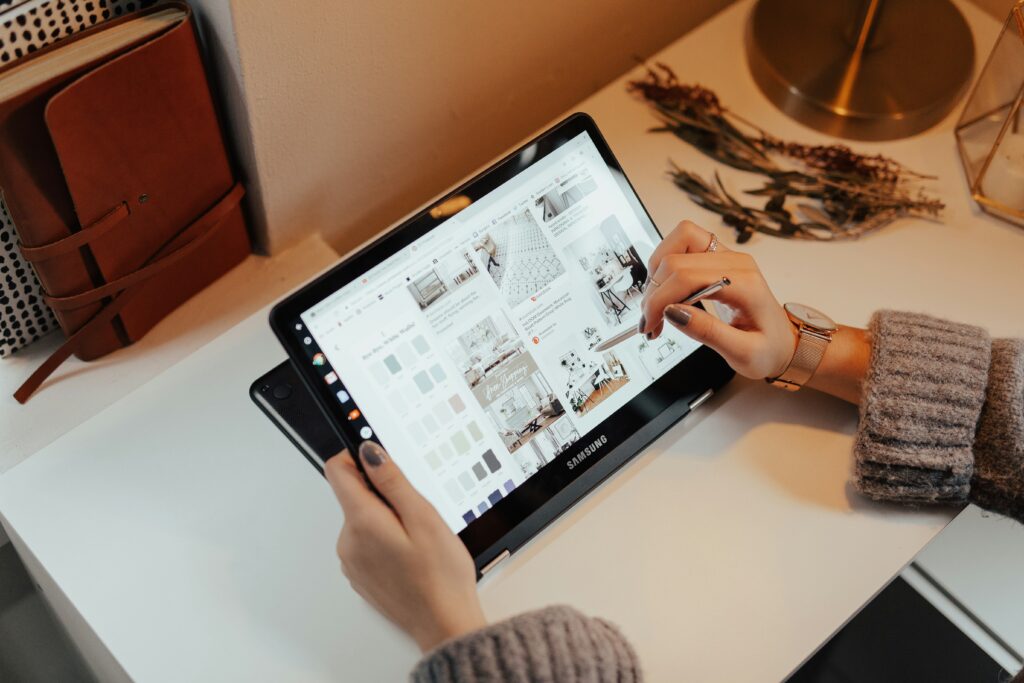The Rise of Foldable PCs – A New Era in Personal Computing

An in-depth exploration of how foldable PCs are transforming the personal computing market, with insights into technological advancements, industry adoption, challenges, and the future potential of this innovative trend.
1.1 The Evolution of Foldable PCs: From Concept to Reality
Foldable PCs have transitioned from futuristic concepts to tangible products that are redefining the landscape of personal computing. The journey began with early prototypes showcased at tech expos, sparking excitement about the potential for flexible displays. Today, brands like Lenovo, ASUS, and HP have made foldable PCs a reality, merging the portability of tablets with the productivity of laptops.
- Early Innovations (2019-2021): Early prototypes, such as the Royole FlexPai and Samsung Galaxy Fold, demonstrated the potential for foldable screens in smaller devices. These innovations laid the groundwork for foldable PCs, proving that flexible display technology was feasible beyond smartphones.
1.2 Technology Behind Foldable PCs: What Makes Them Tick?
- Advanced OLED Displays (Thin, Flexible, and Durable): The core technology enabling foldable PCs is the use of OLED (Organic Light-Emitting Diode) displays. Unlike traditional LCDs, OLED screens are made from flexible organic materials, allowing them to bend and fold. Manufacturers like LG Display and BOE Technology have played a significant role in developing these panels, which can be folded thousands of times without losing brightness or color accuracy.
- Innovative Hinge Mechanisms: A critical component of foldable PCs is the hinge mechanism, which allows the screen to bend while maintaining structural integrity. Lenovo’s ThinkPad X1 Fold, for example, utilizes a multi-link torque hinge system that ensures smooth folding while protecting the display from stress. ASUS’s ZenBook Fold OLED employs a similar, yet more refined hinge that promises durability and smooth transitions between folded and unfolded modes.
- Heat Dissipation Challenges: Foldable PCs present unique thermal management challenges due to their compact design. To address this, manufacturers have integrated advanced cooling solutions, such as graphene sheets and vapor chambers, ensuring that the devices remain cool during heavy usage.
1.3 Market Adoption: Who’s Buying Foldable PCs?
- Enterprise Adoption: Businesses are increasingly adopting foldable PCs for their versatility and portability. Companies that require employees to switch between different working modes, such as fieldwork and office-based tasks, find foldable PCs extremely beneficial. This has led to a surge in demand for devices like the Lenovo ThinkPad X1 Fold among professionals in finance, real estate, and healthcare.
- Creative Professionals: Foldable PCs have gained popularity among creative professionals who benefit from the larger screen real estate for tasks like graphic design, video editing, and digital illustration. Devices like ASUS ZenBook Fold OLED offer touchscreen capabilities with stylus support, making them ideal for artists and designers.
- Tech Enthusiasts and Early Adopters: Tech enthusiasts who seek cutting-edge technology have shown strong interest in foldable PCs, despite the high price points. Their willingness to invest in new technology has driven initial sales and market penetration.
1.4 Challenges Facing Foldable PCs
- Durability Concerns: One of the main challenges is ensuring long-term durability. While manufacturers claim their hinges can withstand thousands of folds, real-world usage may differ. Scratches, dust ingress, and potential screen creases are issues that need to be addressed for foldable PCs to gain widespread adoption.
- Software Optimization: Many software applications are not yet optimized for foldable displays, leading to inconsistencies in user experience. Companies are actively working with developers to create apps that adapt seamlessly to different screen sizes and orientations.
1.5 Future Outlook: The Potential of Foldable PCs in the Next Decade
Industry analysts predict that the foldable PC market will grow exponentially, with more affordable models expected by 2025 as manufacturing costs decrease. By 2030, foldable PCs could become a mainstream choice for consumers, offering an alternative to traditional laptops and tablets. Innovations like self-healing polymers and even more flexible display technologies could make foldable PCs more durable and accessible.




